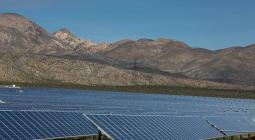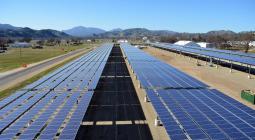Solar power required for all new California homes starting January 1st 2020
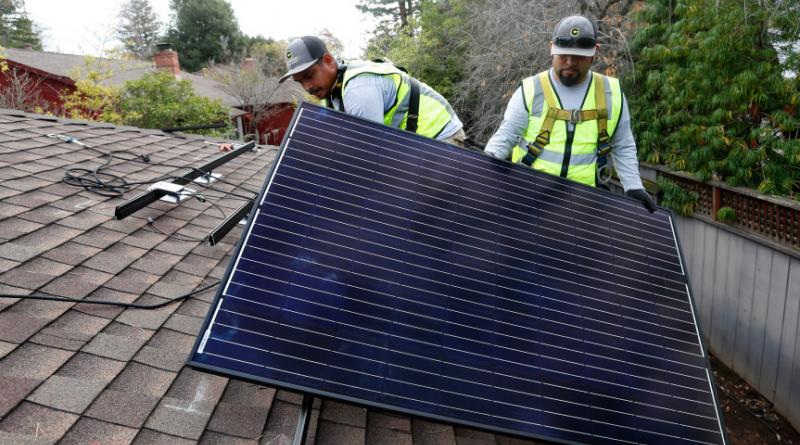
Landmark building rules will be first-in-the nation solar requirement
California already generates more electricity from solar power than any other state. But now a dramatic expansion is about to begin as new building codes take effect Jan. 1 requiring all newly constructed homes statewide to be powered by the sun.
The first-in-the-nation rules, which will affect tens of thousands of homes every year, were approved in 2018 by the California Energy Commission under the administration of former Gov. Jerry Brown. They require all new single-family homes — along with new multifamily residences up to three stories tall, like condominiums — to be constructed with solar panels on their roofs or powered by a larger solar array somewhere else. The rules do not affect existing homes.
Supporters note the new building standards will reduce greenhouse gas emissions and smog statewide and will accelerate California’s leadership role in clean energy. They also note that if homeowners install batteries to store the solar power, they will continue to have electricity even when PG&E and other utilities shut off the power on hot, windy days to reduce the risk of wildfires from falling electrical lines.
“It’s historic and groundbreaking,” said Bernadette Del Chiaro, executive director of the California Solar and Storage Association, a solar industry trade group. “As we strive to get off fossil fuels, we have to change how we build our buildings. Every single solar home we build today is one less burden on the planet.”
There are exemptions. If large trees, hills or other buildings provide so much shade on the home’s lot as to make solar impractical, builders don’t have to comply.
And a new proposal from a Sacramento utility to allow large, distant solar farms to satisfy the rules could mean fewer rooftop solar systems.
Nevertheless, the new rules are a landmark shift for the nation’s most populous state. Builders across California have been closely watching and preparing. Large companies that build major subdivisions are expected to adapt more easily than smaller builders who construct only a few homes a year.
“It definitely hits the little guy harder,” said Andrew Kosydar, scientist and legislative advocate for the California Building Industry Association. “When you add more regulations it’s easier for the big companies to comply. They have more capacity to handle it.”
Lennar, one of the largest home builders in the nation, has been building solar homes in California through its subsidiary, SunStreet, since 2013.
“For us, nothing really changes,” said David Kaiserman, President of Lennar Ventures. “We have been ready for the mandate for years.”
When combined with other new state building codes requiring better insulation and more efficient windows, the amount of energy used by new single-family homes in California will drop 53% compared with the current building codes, according to the California Energy Commission. That’s the same pollution reduction as taking 115,000 cars off the road every three years.
But there is a cost.
The commission estimated the new standards will increase the price of a new house by roughly $9,500. It noted, however, that over 30 years, homeowners will save roughly $19,000 in reduced electricity bills, for an overall savings. Put another way, a mortgage payment would increase by $40 a month due to the rules, but the homeowner would save $80 a month in electricity costs on average, the agency calculated.
“These standards are required under the law to be cost-effective,” said Amber Pasricha Beck, a spokeswoman for the energy commission. “It will be cheaper for you to live in the house.”
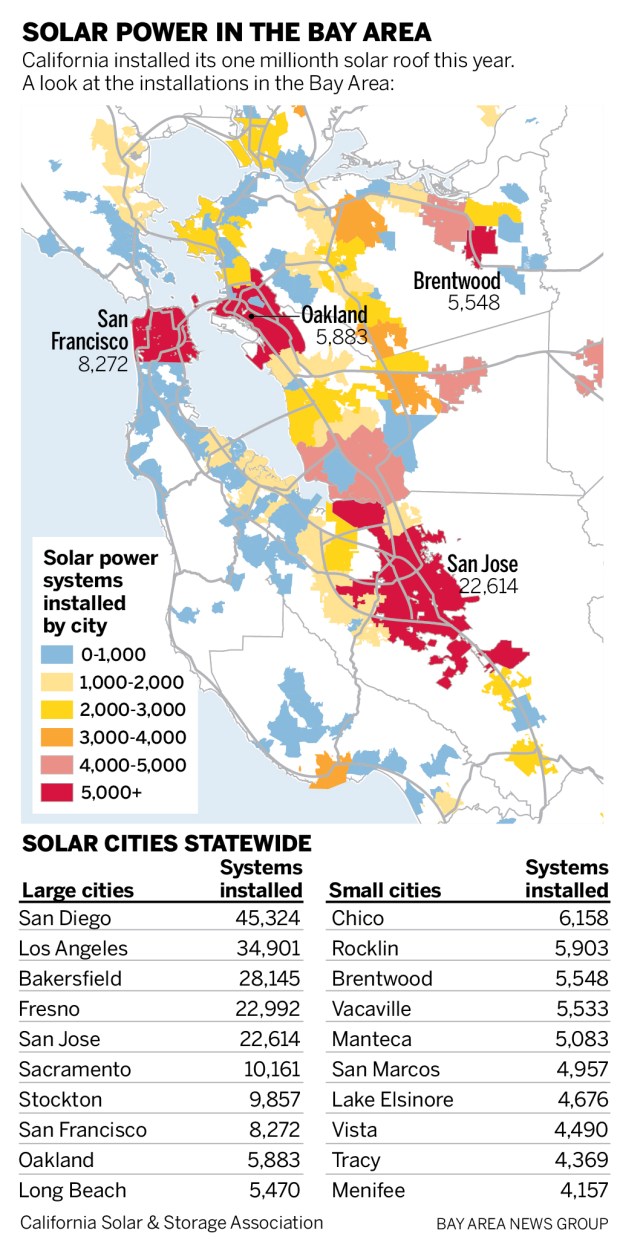
The rules passed last year without major political battles. The California Building Industry endorsed them back then, as did builders such as De Young Properties in Fresno and Eden Homes in Hayward.
But controversy has arisen as the deadline nears.
The Sacramento Municipal Utility District, which provides electricity to 1.5 million people, has proposed a plan where builders could satisfy the law if they sign a 20-year contract with SMUD to provide solar energy to new homes from one of several large solar farms miles away, including a 160-megawatt solar farm that SMUD is building now on the site of the former Rancho Seco nuclear plant near Sacramento.
Builders endorsed the proposal, which still needs state approval. They say it would provide a way to keep costs down, and the flexibility they expected when they agreed to support rules originally.
“We would like options,” said the building industry’s Kosydar, who has a Ph.D. in conservation biology and says the goal of reducing climate change is important. “Some of our builders want to put solar on all of their homes. Some don’t and are looking to find an alternative.”
But critics, including the solar industry and some environmental groups, say SMUD’s suggested plan would betray the original intent of the rules.
“It’s crazy. It flies in the face of the intent of the law,” said Barry Cinnamon, CEO of Cinnamon Energy Systems, a solar company in Campbell. “If you buy solar energy from a big farm, that may be cheaper for the utility, but the homeowner won’t get the benefits, like cheaper electricity. It means SMUD will sell more kilowatt-hours.”
The energy commission postponed a vote on the plan in November and expects to take it up in the spring. The key question will be what the commission meant last year when it allowed builders to satisfy the solar rules with a “community shared electric generation system.” Solar advocates say that meant a local solar array near a few homes. Utilities and builders want it to include larger, utility-scale solar farms that are not connected to the homes.
In the meantime, California continues to make progress on renewable energy.
Existing law requires California utilities to generate 33 percent of their electricity from renewable sources like solar, wind and geothermal power by 2020. They have already met that requirement, hitting 34 percent this year.
Meanwhile, on Thursday, at an event near Fresno, former Gov. Arnold Schwarzenegger and Brown celebrated the state reaching 1 million solar rooftops — a goal Schwarzenegger set in 2006, and primed with tax credits and other incentives.
Overall, 6.6% of California homes now have solar panels.
How many new homes will get solar after Jan. 1? Roughly 110,000 new housing units are built every year in California. About half are single-family homes. Of those, 15,000 new homes a year are built with solar panels now. That number is expected to triple or quadruple.
Also, affordability remains an issue. Although solar panels will cut home electricity bills dramatically, the added price of homes outfitted with solar panels could mean some people can’t qualify for loans.
Only 31 percent of California households can afford to buy the median-priced home, which was $613,470 in the third quarter of 2019, according to the California Association of Realtors.
“If you qualify for a $400,000 loan from the bank, for example, but not $410,000, some people won’t be able to afford it,” said Kosydar.
Environmental groups note the rules allow homeowners to sign contracts with companies that own the panels and lease them to the homeowner, which wouldn’t increase the overall housing sale price.
“There are ways to finance it where you don’t have to put any more money down upfront,” said Pierre Delforge, a senior scientist at the Natural Resources Defense Council in San Francisco. “And you have lower utility bills from day one.”
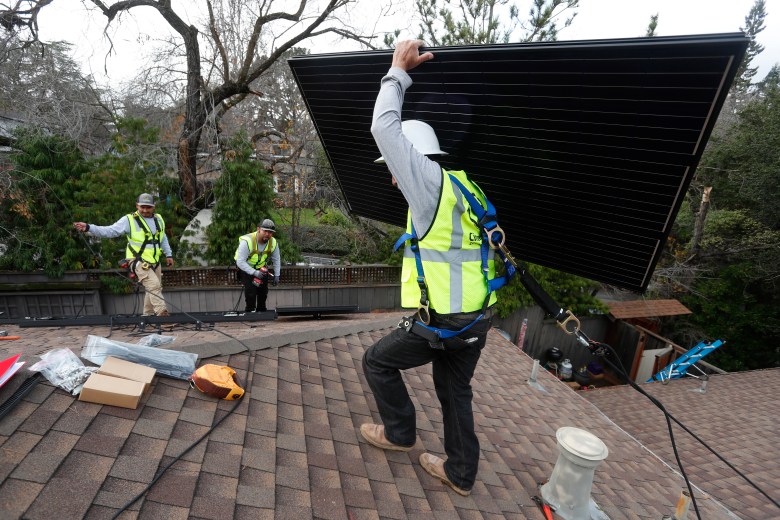
Some cities, including San Jose, Berkeley and Menlo Park, already are moving to cut emissions further by limiting or banning natural gas for heating and appliances in new homes.
The solar mandate, electric vehicle incentives, rising renewable rules for utilities, and new home natural gas limits are key if the state is going to meet its goal of cutting greenhouse gases 40% below 1990 levels by 2030, Delforge said.
“What we do in California matters globally in terms of setting an example,” he said, “and the fact is that we can do it while having one of the strongest economies in the world. It demonstrates we can have good environmental and climate policies and a strong economy.”
15 December 2019
The Mercury News

